The future is uncertain for our last old-growth boreal forests
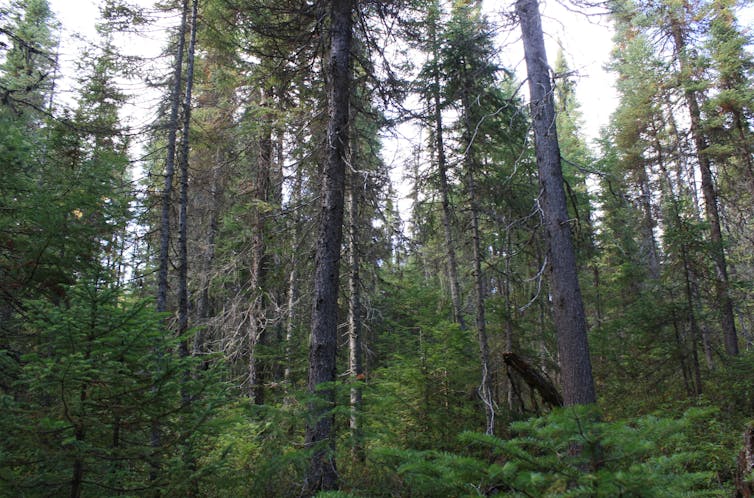
(Maxence Martin)
Maxence Martin, Université du Québec en Abitibi-Témiscamingue (UQAT) and Nicole Fenton, Université du Québec en Abitibi-Témiscamingue (UQAT)
Driving along the Trans-Canada Highway, with its endless succession of spruce, aspen, fir and birch trees, it’s easy to assume that our country is bursting with forests.
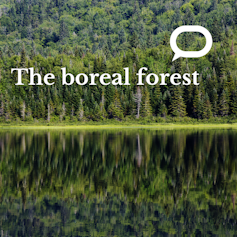
This article is part of La Conversation Canada’s series The boreal forest: A thousand secrets, a thousand dangers
La Conversation Canada invites you to take a virtual walk in the heart of the boreal forest. In this series, our experts focus on management and sustainable development issues, natural disturbances, the ecology of terrestrial wildlife and aquatic ecosystems, northern agriculture and the cultural and economic importance of the boreal forest for Indigenous peoples. We hope you have a pleasant — and informative — walk through the forest!
Although we might see a few logging operations and traces of forest fires here and there, we probably wouldn’t imagine that our forests could some day disappear from the landscape. Yet the reality may be quite different.
The issue at stake is not so much the loss of forests, but rather, the loss of intact forests, i.e. forests where no harvesting activities have ever taken place. This is a major issue that was emphasized once again at the UN Biodiversity Conference, held in Montréal in 2022. Canada ranks third in the world for the rate of loss of its intact forests. Not a very good record.
However, our research in recent years on boreal forest ecology and the impact of forest management shows that we must pay special attention to protecting old-growth forests within intact forests.
Old-growth forests, a rule ignored in favour of the exception
Fires are the main natural disturbance in the boreal forest. Yet while they look impressive, because of the vastness of the territory affected, their impact is relatively moderate. Prior to the Industrial Revolution, much of Canada’s intact boreal landscape consisted of forests that had not burned for centuries. These are often referred to as “old growth” forests. The adjective “old” creates a bias, however, since it suggests that the trees are dying or declining. This is actually far from the case: old-growth boreal forests have remained very dynamic and resilient over the centuries. An old forest is actually no more tired or fragile than a forest that we would describe as either “young” or “mature.” So be careful not to anthropomorphize!
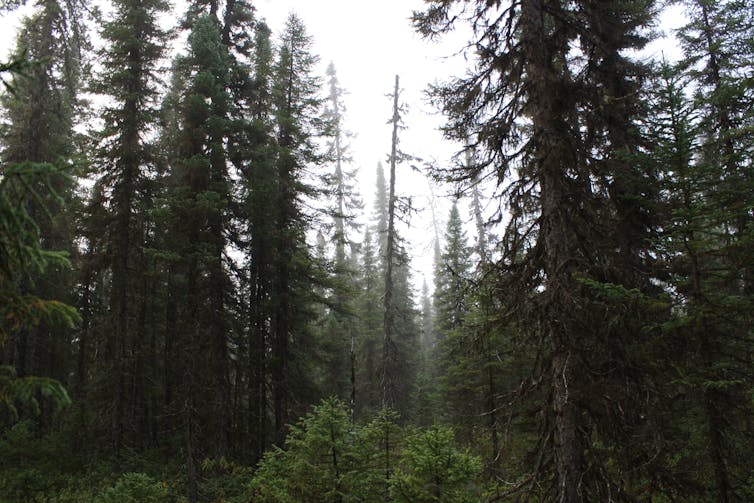
(Maxence Martin), Fourni par l’auteur
As far as the forester — whose main objective is to harvest wood — is concerned, allowing a forest to age amounts to a loss of wood. That’s because it is more efficient to cut forests early and frequently in order to take advantage of the strong growth of young trees. As a result, since the beginning of the industrial era, most harvesting of intact boreal forests has targeted old-growth forests with the objective of replacing them with younger forests. This drastically reduces the surface area and connectivity of old-growth forests. While they originally formed large continuous clumps, the old-growth forests that remain in managed areas now form small clusters separated from each other.
Massive degradation of forest landscapes, not deforestation
Regularly harvesting young forests makes sense in forests that are already being managed (i.e. forests that have been modified by previous harvesting) because this optimizes the harvesting of a material with many benefits. Cutting in intact forests, on the other hand, leads to a degradation of the landscape through the loss of old-growth forests. Old forests offer very different habitats and ecological services than young, managed forests. For example, dead wood is a critical habitat for many forest species. However, it is in old forests that dead wood is most abundant and diverse in terms of its size or stage of degradation.
In Sweden, the loss of old-growth forests has led to the population collapse of many forest species. In Canada, the decline of the woodland caribou is considered a “canary in the coal mine,” a harbinger of a much larger ecological crisis that could result, in part, from the loss of old-growth forests.
However, it is inaccurate to speak of deforestation in the boreal forests, as the forest grows back after cutting. What’s happening should actually be called degradation. By replacing old-growth forests with younger forests that will not be allowed to age, we are degrading forest habitats.
So, talking about the low rate of deforestation of Canada’s boreal forests has become a way to avoid addressing the question of the degradation of these forests, which has been widely documented now for decades.
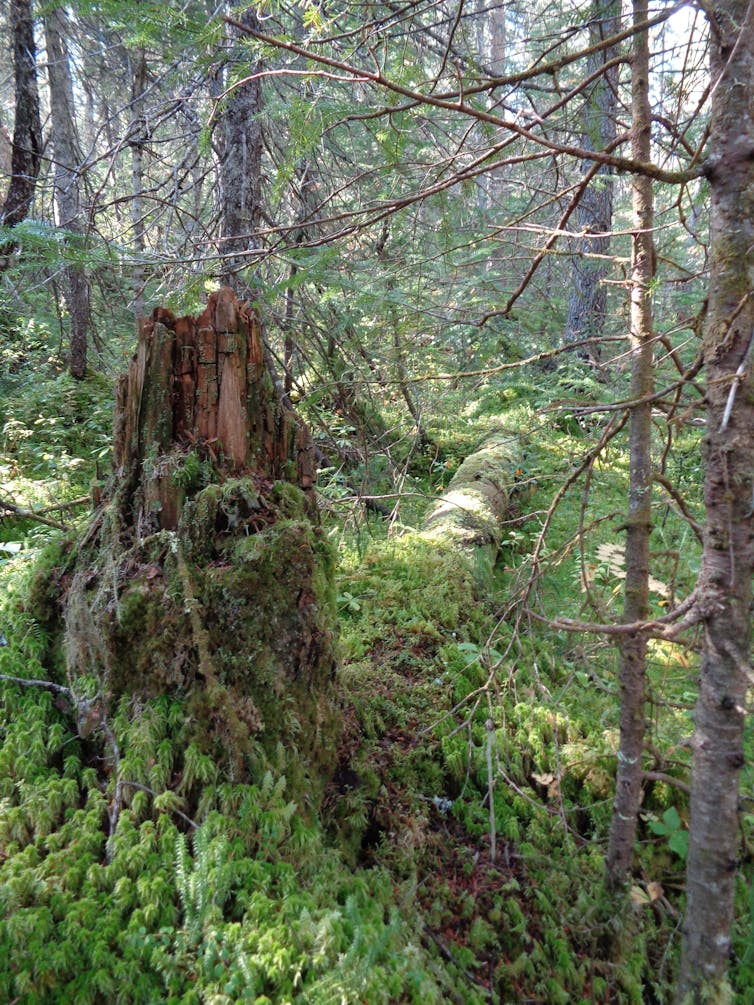
(Maxence Martin), Fourni par l’auteur
Do we know what we are losing?
Stopping the degradation of old-growth boreal forests constitutes a major environmental challenge in Canada, and a policy of restoring already degraded landscapes must be added to this. Fortunately, these goals are not incompatible with timber production. The latter should focus on forests that are managed for this purpose, rather than on intact forests.
Still, we must recognize our lack of knowledge about old-growth forests and the issues that arise from them. These forests show a high degree of heterogeneity of histories, dynamics and habitats that can be very difficult to identify and map. Even today, it appears to be impossible to provide a full picture of the state of Canada’s old-growth forests.
Boreal biodiversity also remains poorly understood, partly because it is dominated by species that are less visible and much less attractive than large mammals, like the caribou. These include mosses, lichens, insects, fungi or even bacteria.
An effective conservation policy must be both quantitative and qualitative, protecting natural habitats in all their diversity. Current protection targets are mainly quantitative. They are, for example, based on percentages of areas to be protected. However, logging is mainly concentrated in old-growth forests that are richer in wood.
More globally, the recent decision by the province of Québec to cancel 83 protected area projects in commercial forests, and to replace them with protected areas in the north that have no impact on the forest industry, demonstrates the risk of using simple accounting criteria that do not take ecological factors into consideration.
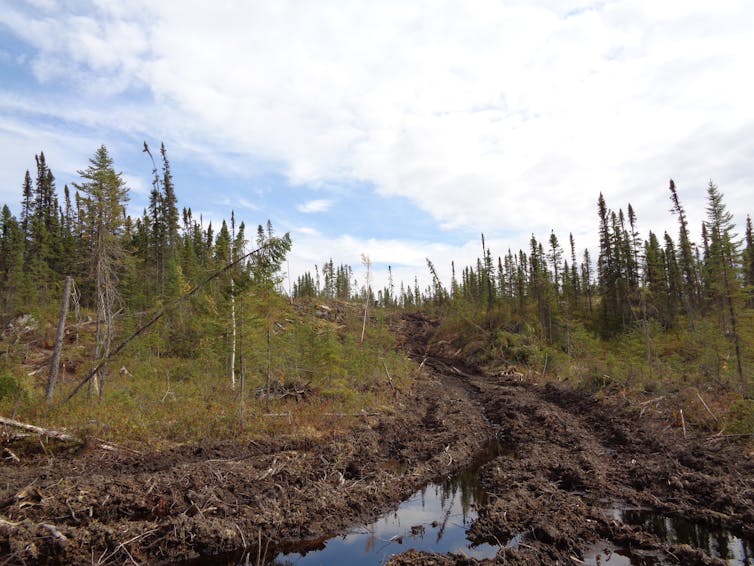
(Maxence Martin), Fourni par l’auteur
Talk about the urgent need to protect the last remaining intact forests is good news. However, to ensure that any conservation policy is really effective, we must proceed with caution, using critical skills. In Québec, for example, a degradation rate of 75 per cent of old-growth commercial forests is unfortunately still seen as, “acceptable.”
Given the urgency of our current climate and environmental crisis, we can certainly do better.![]()
Maxence Martin, Écologie et aménagement forestiers, Université du Québec en Abitibi-Témiscamingue (UQAT) and Nicole Fenton, Professeure, écologie végétale/Professor, plant ecology, Université du Québec en Abitibi-Témiscamingue (UQAT)
This article is republished from The Conversation under a Creative Commons license. Read the original article.



